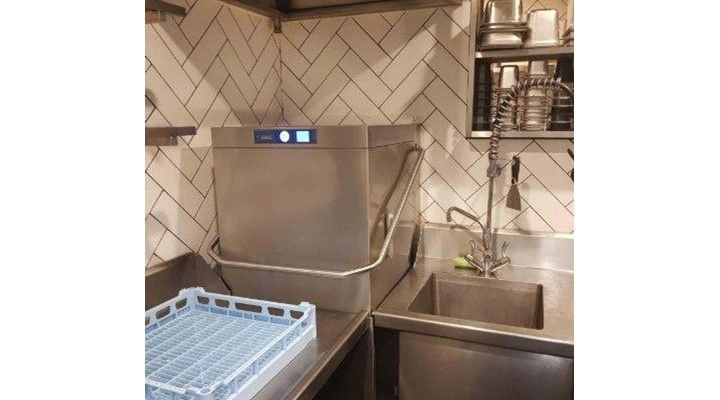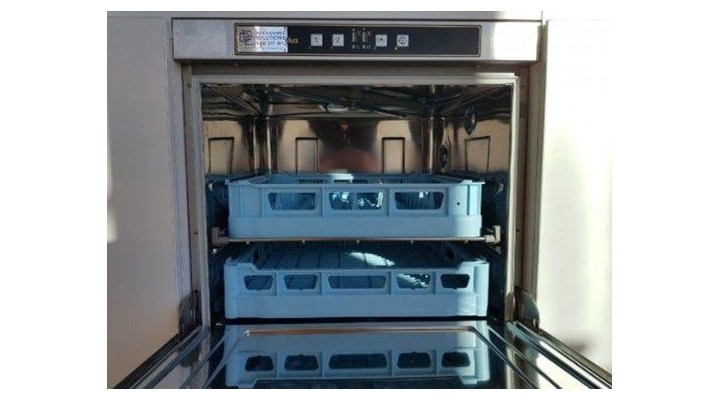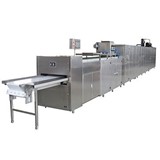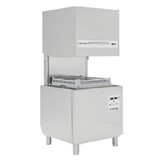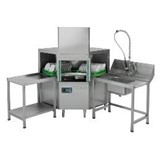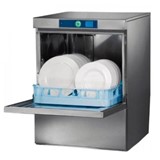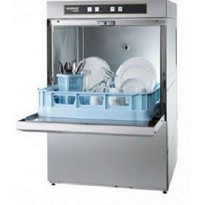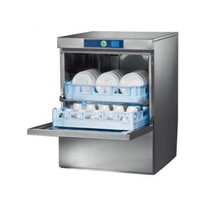During your restaurant’s early years, your kitchen crew – especially the people you hired to wash the dishes – had to do everything by hand. Yes, dishwashing was tedious and messy, but your crew got the job done (despite your unhappiness at the number of plates and glasses they accidentally broke). Now that your business has grown, and your restaurant is jam-packed with customers night and day, your human dishwashers just couldn’t keep up anymore. You need to upgrade and buy your kitchen a commercial dishwasher (also known as warewasher).
A warewasher or commercial dishwasher is one of the most expensive investments in your kitchen. The latest unit can set you back thousands of dollars, and even second-hand ones can be quite pricey. So, before you go ahead and buy one, here are some tips on which type of commercial dishwasher is ideal for your kitchen and how you can save money by ensuring that it is always in tip-top shape.
The first thing you should do when you’re looking to buy a commercial dishwasher is to research your options. Commercial dishwashers come in different sizes and capacities, and the type of machine that is ideal for you depends on the size of your operation. Do you own a busy buffet or a popular themed restaurant that is open from early morning and into the night? Are you an administrator of a cafeteria or a hospital in the metro? If you need to process hundreds of racks every day, then a conveyor dishwasher is perfect for your high-volume operation. A door type or rack dishwasher is ideal if you own a mid-sized restaurant which processes less than 350 racks each day. If you have a low-volume operation (a bar or a small pizzeria, perhaps?), then an undercounter commercial dishwasher is ideal for you.
No matter how much you want to save money or splurge (it’s your money, after all), common sense dictates that you purchase a dishwasher that is ideal for your operation. A conveyor type dishwasher would be wasted in a low-volume operation, and this bulky dishwasher wouldn’t fit inside a compact kitchen to begin with. You also won’t save money if you buy an undercounter commercial dishwasher and process hundreds of racks every day. You will only doom the dishwasher to repeated breakdowns and regular repairs if you insist on processing hundreds of racks in your overloaded and overused machine.
Before you use your new and shiny dishwasher, have your supplier or the company’s technician train you and your kitchen staff. A commercial dishwasher may seem like a simple and foolproof machine, but one wrong push of a button or a freak accident will not only damage the machine but also send one of your kitchen crew to the hospital and nobody wants that. If you’re the hands-on type of business owner, it’s a good practice to read the dishwasher manual from cover to cover to familiarise yourself with the machine. Follow the manufacturer’s tips on how to care for your commercial dishwasher so you can get the most out of it in the long run.
Now that you have an idea about the type of commercial dishwasher that is perfect for your operation, here comes the hard parts: keeping it in good shape and making the most out of it.
I have a dishwasher at home, you say, and my family has owned it for many years. How hard can keeping a commercial dishwasher in good shape be when it’s not all that different from a domestic dishwasher?
From the design to their capacity to the types of detergents used, commercial dishwashers are totally different machines from household dishwashers. Caring for your commercial dishwasher goes beyond the ordinary, too. So how do you maintain your commercial dishwasher so you can prolong its life and get the most out of it?
* Before loading the dirty dishes in the rack and into the warewasher, remind your staff to remove every bit of food scraps. There’s a reason why removing bits and pieces of food is the first best practice when it comes to maintaining your commercial dishwasher. When this crucial first step is neglected, accumulated food debris can clog some parts of the machine, including the drain lines or the pump assembly. Where bits and pieces of food accumulate, you can be sure that bacteria will multiply also—and that’s not good for your business or your patrons’ health. You can also avoid costly repairs in the future as your warewasher doesn’t need to work twice as hard to remove food from the dishes.
* Use correct racks, as well as stack tableware properly before wash cycles. Using racks that are way too small may force your kitchen crew to stack one tableware on top of a smaller one (for example, a bowl stacked atop another or a large plate covering a smaller one). Bigger items will cover smaller ones and water might not reach the smaller items adequately.
* Assign your trusted kitchen staff to regularly clean the commercial dishwasher to prolong its life. As food debris accumulate in your warewasher, it is absolutely necessary to give the interior a thorough rinse daily using fresh water to remove any food residue. Drain the warewasher after giving it a good wash.
* Food and chemical debris can also accumulate in and clog your warewasher’s wash/rinse arms and jets. If you notice that the arms and jets are not working properly and your tableware feels and looks dirty even after the wash cycle, it’s time to check if the wash/rinse arms and jets need to be cleaned and gently brushed off.
* When you’re cleaning the warewasher, take time to remove the filter and shake out bits of food trapped there into the rubbish bin. Remove deep-seated dirt and chemical residue using detergent and a brush. Give it a good rinse afterwards.
* If you live in an area that is supplied with hard (mineralized) water, one problem you might have when cleaning your commercial dishwasher is the buildup of lime. Those tell-tale white scales are caused by a combination of chemicals in the water (carbonate, calcium, magnesium, and sulfate) and the detergent. Lime buildup can cause clogging, discoloration, and even damage to your warewasher. You will need to have it serviced earlier than expected if this happens. Prevent lime buildup and subsequent damage by installing a water softening system that gets rid of chemicals in the water that causes the buildup of white scales. If you have trouble removing the lime scales, clean the machine using the appropriate de-liming solution (make sure that you talk with a professional technician before you do this). You’re going to repeat the wash cycle a few times, drain the machine, and rinse it with fresh water to complete the process.
* Schedule a more thorough cleaning every week, every month, and every year. Even if it hasn’t broken down in the past, taking the time to have your warewasher maintained periodically can help keep it in tip-top shape and give you the chance to spot parts that need to be replaced or repaired.


